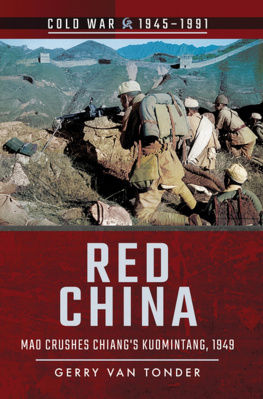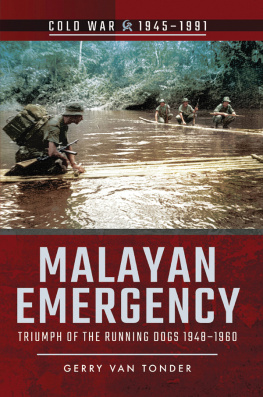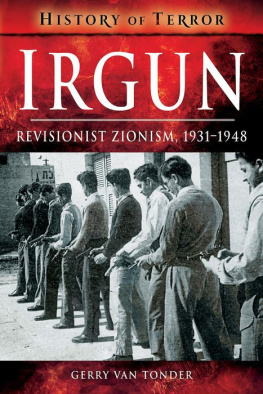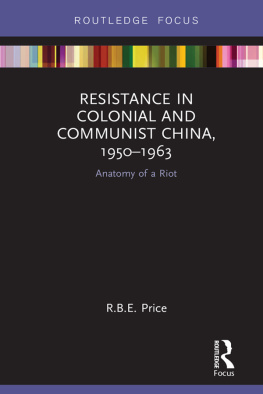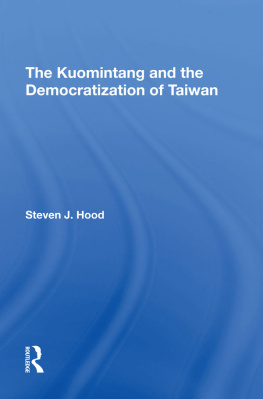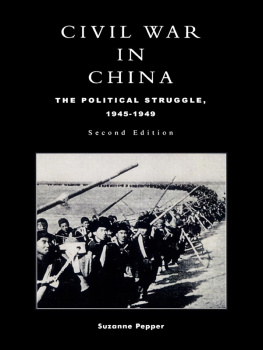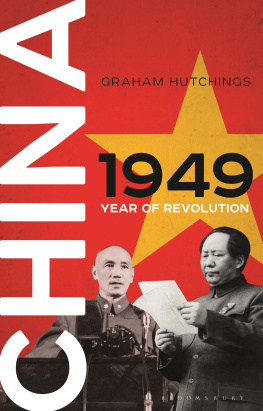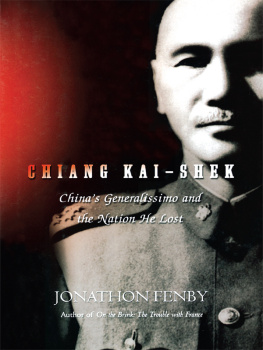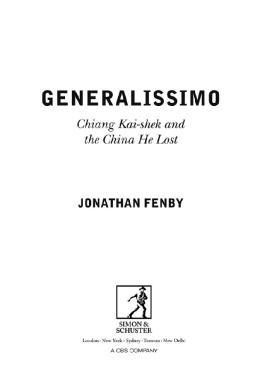RED CHINA
MAO CRUSHES CHIANGS KUOMINTANG, 1949
GERRY VAN TONDER
To my wife Tracey
First published in Great Britain in 2018 by
PEN AND SWORD MILITARY
an imprint of
Pen and Sword Books Ltd
47 Church Street
Barnsley
South Yorkshire S70 2AS
Copyright Gerry van Tonder, 2018
The author gratefully acknowledges key source material obtained from declassified Central Intelligence Agency documents and the British Newspaper Archive.
Special thanks to Miguel Miranda for his preliminary research
ISBN 978 1 52670 810 6
eISBN 978 1 52670 812 0
Mobi ISBN 978 1 52670 811 3
The right of Gerry van Tonder to be identified as the author of this work has been asserted in accordance with the Copyright, Designs and Patents Act 1988.
A CIP record for this book is available from the British Library All rights reserved. No part of this book may be reproduced or transmitted in any form or by any means, electronic or mechanical including photocopying, recording or by any information storage and retrieval system, without permission from the Publisher in writing.
Every reasonable effort has been made to trace copyright holders of material reproduced in this book, but if any have been inadvertently overlooked the publishers will be pleased to hear from them.
Pen & Sword Books Ltd incorporates the imprints of Pen & Sword Archaeology, Atlas, Aviation, Battleground, Discovery, Family History, History, Maritime, Military, Naval, Politics, Railways, Select, Social History, Transport, True Crime, Claymore Press, Frontline Books, Leo Cooper, Praetorian Press, Remember When, Seaforth Publishing and Wharncliffe.
For a complete list of Pen and Sword titles please contact
Pen and Sword Books Limited
47 Church Street, Barnsley, South Yorkshire, S70 2AS, England
email:
website: www.pen-and-sword.co.uk
TIMELINE
1911
10 October: Beginning of the 1911 Revolution; the Qing Dynasty is overthrown.
1919
4 May: Students and anarchists launch the May Fourth Movement to protest Japans annexation of Chinese territory.
1921
12 July: Founding of the Chinese Communist Party (CCP) in Shanghai.
1925
12 March: Sun Yat-sen dies from cancer.
1927
27 August: The Nanchang Uprising begins and is defeated the following month.
7 September: The Autumn Harvest Uprising begins in Hunan and is also a failure. October: Founding of JiangxiFujian Chinese Soviet.
December: Chiang Kai-shek returns to China, becoming generalissimo.
1933
25 September: Chiang Kai-shek launches the Fifth Extermination campaign.
1934
10 October: Start of the Long March. The JiangxiFujian Soviet is evacuated.
1935
19 October: The First Front Army arrives in Shanxi; the Long March ends.
1936
1225 December: Xian Incident takes place, a political crisis culminating in the seizure of the Nationalist generalissimo Chiang Kai-shek by two of his own generals, Zhang Xueliang and Yang Hucheng.
1937
7 July: The Marco Polo Bridge incident triggers the Second Sino-Japanese War.
13 August: Battle of Shanghai.
13 December: Nanking falls to the Japanese.
1941
7 January: The CCPs New Fourth Army clashes with Kuomintang (KMT) units.
7 December: The Japanese attack Pearl Harbor.
1944
17 April: Operation Ichi-go commences.
1945
9 August: The Soviet Red Army invades Manchuria.
15 August: Japan surrenders.
29 August: Mao Zedong flies to Chungking to negotiate a coalition government with the KMT; Communist Chinese forces begin entering Manchuria.
1946
23 May: Partial withdrawal of Soviet Red Army from Manchuria.
July: Founding of Peoples Liberation Army (PLA); civil war resumes.
1948
27 August: Beginning of the Huai-Hai campaign.
October: PLA strength reaches 1.8 million.
23 November: The Huai-Hai campaign ends, during which the KMT loses 400,000 men.
1949
January: The KMT garrison in Peking surrenders.
10 October: The Communist Chinese hold a victory parade in Peking; Mao Zedong announces the creation of the Peoples Republic of China (PRC).
INTRODUCTION
The epic proportions of the tragedy of the country that is China before, during and after the Second World War, is difficult to perceive in terms of sheer magnitude and scale. The cold statistic of 13 million casualties sustained during the war offers a semblance of the problems that confronted the nations ideologically diverse leaders after Japans capitulation.
Initially, the prominent role played by the Nationalists during the conflict seemed set to take China through the healing process and into a complicated future. However, such appearances were deceiving. Mao Zedongs brand of people-centred communism ensured his hold over vast areas of northern China, while Chiang Kai-sheks nationalist regime appeared bent on self-destruction as a miscellany of failures frustrated even his most loyal allies.
The closing stages of the Second World War in Asia was a Soviet affair. With Berlin captured by the victorious Red Army, ending the war in Europe, the wily Joseph Stalin redirected his military resources towards the Far East. In the northeastern Chinese puppet state of ManchukuoState of Manchuria acquired by Japan in 1931, a vast agro-industrial empire had grown in isolation as the war in the Pacific effectively kept the region out of the war. The Kwantung Army, an army group of the Imperial Japanese Army, governed Manchukuo, its chiefs of staff holding the top military and civil administration positions. Originally formed as a garrison to protect the railroads paid for by Japanese banks, over a period of twenty-five years the Kwantung Army outgrew its humble beginnings, peaking at a strength of more than 1.3 million, assuming an exaggerated importance.
Its officers were complicit in the Mukden Incident in 1931 that implicated China, thereby justifying the seizure of the territory. Its role in the Marco Polo Bridge incident in 1937 launched the bitter Sino-Japanese War.
But for much of the Great Pacific War, as Tokyo called its struggle with the Allies from 1941 until 1945, the Kwantung Army remained idle, having little use in any theatre. As a result, it had grown large, impressive, and impotent.
On 9 August 1945, just three days after Little Boy incinerated Hiroshima and coinciding with the same terrible hours when a flight of B-29s delivered Fat Man to Nagasaki, the Soviet Red Army sealed Manchukuos fate. Slicing across Outer Mongolia on horseback, muleback, on foot and truck and tread, one half of a giant pincer carved a path to encircle the Kwantung Army in Chinas dusty central plains.
The other pincer, ferried by river boats across the Amur and Usuri rivers, barrelled down on the Japanese with violent force, their path softened by the largest Soviet airborne operation of the war. Like the rest of Imperial Japans legions, the Kwantung Army was full of ardent soldiers equipped with inadequate weapons. Armoured cars and light tanks were the best that could be mustered against the Soviet T-34s. From radios to howitzers, Japans soldiers were ill-prepared to face off against the combined arms of their nemesis.
The remnants of the Kwantung Army surrendered en masse a week before the United States hailed VJ Day. The spoils of Manchukuo were for the Soviets to do with as they pleased. This meant the wholesale appropriationmore like pillaging of machine tools, generators, raw materials, and whatever else could be disassembled and sent back to the Russian heartland. Included among this booty were unwanted Japanese prisoners numbering hundreds of thousands, well-appointed administrative buildings of a government that no longer existed, and the former Chinese Emperor Pu Yi, who was once again exiledthis time to the Soviet Union. But while the Soviet investment of Manchuria, its proper westernized name, seemed like a timely effort that hastened the wars end, it did give Moscow a perfect opportunity to return favours; though not to the Americans, whose merchant fleet had delivered millions of tons in lend-lease aid over the past five years. Chinas government, the Kuomintang (KMT), being so reliant on American support, allowed 50,000 marines to deploy in Manchuria to help the Soviets disarm and repatriate the resident Japanese population. But an attempt at delivering US marines to the old imperial capital of Peiping (also Beiping, later Peking / Beijing), and Qingdao was refused. The Soviets were just as steadfast in holding on to Port Arthur in the Liaotung Peninsula jutting along the rim of the Yellow Sea. As a further affront, the KMT was blocked from reclaiming Manchurian cities, which flew in the face of the Chiang Kai-shek regimes Treaty of Friendship with the Soviet Union.


